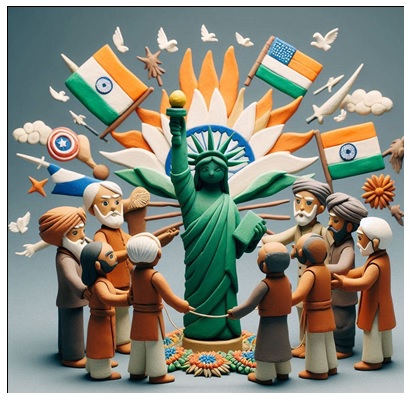- Visitor:13
- Published on:
Gender-Critical Feminism
Men and women were considered to be very different, and women were considered to be inferior. Feminism was the sex/gender heterodoxy then. This isn’t ancient history, it was true as recently as the 1970s, but it’s history nonetheless. The moment we’re in right now, when it comes to sex and gender, does not fit this binary structure. Now the heterodoxy is plural, and its factions are in fierce disagreement with each other.

- The folowing piece is taken from the “Preface” section of the book titled “Gender-Critical Feminism” by Holly Lawford-Smith. The book is a call for feminism to rediscover its radical edge. Here, the author with her learly and engaging writing argues that gender is not something to be embraced and celebrated, but a system of oppression which should be rejected.
There have been countless moments throughout history when momentous social shifts occurred. We’ve shifted from thinking the earth was at the centre of the universe to realizing it’s just one more planet to orbit the sun. We’ve shifted from feudal societies where accidents of birth determine who lives in luxury and who works to pay for that luxury, to societies governed by the principle of equal opportunity. We’ve stopped believing in ‘humours’, four fluids that make up the body in different proportions and determine people’s mental and physical capacities. Many of us have shifted from belief in a god or gods creating life, to having an evolutionary understanding of the origins of life. We’ve stopped thinking it’s acceptable to own people, or to keep people in conditions of slavery or servitude. We could zoom in on any one of these moments in history and find our protagonists, people courageously challenging the prevailing orthodoxy, or working underground to help those harmed the most by that orthodoxy. Our narrative for these historical moments is often binary: the resisters, the rebels, the misfits, and the visionaries, versus everyone else. The people in the mainstream who go along with the status quo, and the people who see the problem and start to do something about it. The orthodox, and the heterodox.
There was a binary narrative like this for feminism, once: feminists were the rebels, the women who first started to ask questions about whether woman was really destined to be merely the wife and helpmate of man. Feminism was simple then. It was a single heterodoxy fighting for women’s rights and opportunities. It challenged the perception that what woman appeared to be, itself a product of rigid social conditioning, was all she was capable of being. The orthodoxy it worked against, in place in many con- servative countries and in many segments of progressive countries even today, was a set of ideas according to which men were meant to be masculine, women were meant to be feminine, and women were for the servicing of men and men’s needs. Men and women were considered to be very different, and women were considered to be inferior. Feminism was the sex/gender heterodoxy then. This isn’t ancient history, it was true as recently as the 1970s, but it’s history nonetheless. The moment we’re in right now, when it comes to sex and gender, does not fit this binary structure. Now the heterodoxy is plural, and its factions are in fierce disagreement with each other. Here are two—very different— heterodox accounts of sex and gender:
Gender as identity. There is no sex/gender distinction, there is only gender. Sex, the idea that humans can be sorted into two biological types, male and female, is an outdated concept. Sex is a spectrum; or there are many dif- ferent sexes; or there is really no such thing as sex, just a set of bad ideas imposed onto arbitrary features of bodies. Whatever sex is or was, it doesn’t matter anymore. What matters is gender, in particular, gender understood as identity. Every human person has a gender identity, at minimum ‘man’, ‘woman’, or ‘nonbinary’. This new way of sorting people into categories super- sedes sex, but takes over the role that sex used to play, for example as the basis of romantic and sexual attractions between people, or as the trait deter- mining which social spaces can be appropriately used. According to this view, transwomen are women, transmen are men, and nonbinary people are neither women nor men. A transwoman belongs on a women’s sports team, or in a women’s prison, or in a women’s domestic violence refuge. Same-sex attractions are ‘transphobic’. Women-centred language is ‘exclusionary’ if it refers to biological traits. Wearing pussy hats and t-shirts with uteruses printed on them to the women’s march is bad; it suggests a connection between women and vulvas, women and uteruses. But some men have vulvas and uteruses (transmen), and some women don’t (transwomen).
Gender as social norms and expectations. There is a sex/gender distinction, and sex is indispensable to it. There are two sexes, male and female, and intersex conditions do not undermine this. Gender is a set of social norms and expectations imposed on the basis of sex. There is no understanding gender without sex. Women are subject to the expectation that they be fem- inine, men that they be masculine. Men are valued more highly than women. Understanding gender as norms imposed on the basis of sex allows us to make predictions, for example about who will be subject to social sanctions (masculine and other gender norm non-conforming women, feminine and other gender norm non-conforming men). And it allows us to think about the social construction of femininity, the ways that women have been ‘made’ to be feminine, both throughout history, and within an individual woman’s lifetime. This understanding allows us to critique a range of social practices, for example the standards of beauty by which women are assessed. These may require women to spend more time and money, and accept more pain and discomfort, than men (for example, to purchase skincare regimens, makeup, hair products, clothing and shoes; to take the extra time needed to apply makeup and style hair; to have body hair plucked, waxed, or lasered; to undergo cosmetic surgeries like breast implants, nose jobs, or labiaplast- ies).6 It is the social construction of womanhood that causes some women to dis-identify with womanhood and in some cases attempt to disaffiliate from womanhood (‘I am not like that, so I must not be a woman’). And conversely, it is the social construction of womanhood that attracts some people who are not female to identify with womanhood and in some cases affiliate with womanhood (‘I am like that, so I must be a woman’).

It is not uncommon that competing heterodoxies lose sight of the common enemy they have in the orthodoxy, and focus their opposition upon each other. For example in the documentary Rebel Dykes (2019), women involved in lesbian feminism in London in the 1980s describe a social land- scape in which homophobia was rife, and there was a lack of legal rights and protections for gay and lesbian people. The second wave feminist move- ment, starting in the late 1960s and taking off in the early 1970s, had created a flourishing underground scene of lesbians, many of whom were separat- ists (refusing the company of men entirely). But the radical feminists and the lesbian separatists were critical of lesbian romance and lesbian sex that imitated heterosexuality, and they were vehemently opposed to male violence against women, which they saw lesbian sadomasochism as imitating. This created a conflict at the time, with the lesbians who wanted to explore and enjoy all forms of sexuality, including those which could be argued to be imitating heterosexuality or male violence. The ‘rebel dykes’ were leather-wearing, motorbike-riding, ‘sex positive’ lesbians, many involved in underground clubs where there were live lesbian sex shows, including per- formances of sadomasochistic sex. It is clear from the documentary that the opposition between the ‘rebel dykes’ and the other lesbian feminists was fierce, with some of the women interviewed in the film describing a raid by the radical feminists and lesbian separatists on one of their sex clubs, where the furniture was smashed with crow bars and women were threatened.
A similar opposition has emerged within the sex/gender heterodoxy today. In the place of crow bars there is excessive social sanctioning. From both sides there is social media dogpiling, and unpleasant, ad hominem attacks. From the gender-as-identity crowd against the gender-as-norms crowd there are open letters, campus protests, campaigns to get women fired (some of which have been successful), malicious accusations made in the media and on social media, campaigns to get women banned from online platforms (often successful), deplatformings, taking women to court, forcing women out of political parties, the occasional physical assault, and more. The gender-as-norms crowd are diverted into expending enormous energy in defending themselves, and their views, rather than simply getting on with the work of feminism as they understand it.
Disagreement with gender as identity is taken to mean agreement with conservative or traditionalist views about gender. This is a failure to see ‘beyond the binary’ of disagreement about sex and gender. In this case there is not just the rebels and everyone else. There are two very different groups of rebels, who have very different ideas about what is wrong with the status quo, and what the best methods are for changing it. This is a book about one group of rebels under siege today, those resisting the political erasure of sex, and fighting to maintain the understanding of gender as norms, because of its immense utility in describing, understanding, and challenging sexist socialization. These rebels call themselves gender-critical feminists, referring to the idea that gender is something we should be critical of. I am one of them.
I wrote this book because I think gender-critical feminism presents the greatest challenge to conservative or traditionalist views about gender and has the best chance of overturning it. I think it is more ambitious, and sig- nificantly more appealing and coherent, than the alternative heterodox view of sex/gender. I worry about the future of feminism, because I do not see how we can fight for women’s liberation when we have ceded any under- standing of the trait on which women’s oppression is based (namely sex) and the system which helps to perpetuate it (gender norms). Contemporary feminism is kind, inclusive, and affirming of women’s choices, whatever they happen to be. Those traits have value, but they will not overturn thousands of years of oppression on the basis of sex, or earn women their liberation. I hope to persuade you that gender-critical feminism is the theory and movement that we need.
Bibliography:
Lawford-Smith, Holly. Gender-critical feminism. Oxford University Press, 2022.
Center for Indic Studies is now on Telegram. For regular updates on Indic Varta, Indic Talks and Indic Courses at CIS, please subscribe to our telegram channel !
- 6 min read
- 0
- 0










